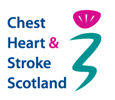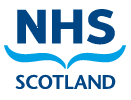Changes in breathing pattern
- View text alternative
-
Scene 1: Changes in breathing pattern?
What to look for What this might mean Look for signs of increased effort when breathing:
- Accessory muscle use.
- Pursed lip breathing.
- Fixing with the upper limbs.
- Mouth breathing.
This can mean that the person is working harder than they should be and can be a sign of airway obstruction or restriction.
Increased breathlessness when lying down is called orthopnoea and can be a sign of heart failure.
Look at how regular the breathing pattern is:
- Is the depth and rate of the breath steady or variable?
- Does the person tend to ‘gulp’ or ‘stack’ breaths?
This, as well as signs of increased work of breathing can indicate a dysfunctional breathing pattern.
An increased respiratory rate over 40 breaths per minute is a risk for developing low levels of carbon dioxide in the blood (hypocapnia).
A reduced respiratory rate of less than 8 breaths/ minute can lead to a build up of carbon dioxide in the blood (hypercapnia).
Scene 2: Do they have signs of oedema in their legs, ankles or feet?
What to look for What this might mean Oedema is the presence of fluid in interstitial spaces.
Look at circumference of legs, ankles & feet area.
Gently press skin with thumb and release – if an imprint is left behind then this is a sign of pulmonary oedema.
The skin can also look extremely shiny, red with dry patches. This is a sign of more advanced pulmonary oedema.
This can be caused by kidney, liver cardiac or respiratory disease If untreated people can go on to develop cor pulmonale If untreated people can go on to develop cor pulmonale (a serious complication, where the chambers in the heart become enlarged and less efficient). If your patient has signs of new or increased oedema this should be investigated urgently.
Scene 3: Changes in Weight
What to look for What this might mean Underweight Increased calorie requirement due to additional effort and use of accessory muscles.
People can struggle to eat when very breathless.
Overweight Reduced activity due to (fear of) breathlessness.
Scene 4: Sputum
What to look for What this might mean Clear
No sign of infection.
Yellow/ green
Likely infection - recommend sample should be tested for bacteria to determine appropriate antibiotic treatment. Some patients with Bronchiectasis may have yellow/green sputum even when they are well.
Brown
More advanced infection - requires urgent treatment and an overall review of the patient.
Red/ blood stained
Signs of more complex respiratory conditions or other underlying pathology. Needs further investigation.
Scene 5: Changes in Colour
What to look for What this might mean Pallor (pale)
Anaemia. Redness/flushed (usually face and fingers)
Increased red blood cells (polycythaemia).
Retaining CO2.
Fever.
Cyanosis (blueish colour to skin)
Peripheral - affects fingers or toes
Central - affects mouth, lips & tongue
Indicative of Hypoxia. NB people can be hypoxic without showing signs of cyanosis. Cyanosis is the bluish or purplish discolouration of the skin or mucous membranes due to the tissues near the skin surface having low oxygen saturation.
Scene 6: Hands
What to look for What this might mean Hands – observe for yellowing staining.
Indicative of a significant smoking history.
Clubbing – rounded finger tips and loss of angle between nail & nail bed.
This can be a sign of advanced respiratory disease or other pathology.
Scene 7: Pain
What to look for What this might mean Sharp stabbing pain, worse with a deep breath.
Pain around rib margins, worse with coughing or moving.
Pleuritic pain, caused by underlying inflammation or infection. Other causes may include rib fractures, pulmonary embolus.
Central chest pain
Dull, constant pain
Likely musculoskeletal but need to exclude other causes.
Possibly cardiac and requires immediate medical attention. Requires further investigation.
Scene 8: Cognition
What to look for What this might mean Confused/agitated
Indicative of reduced levels of oxygen in the blood (hypoxia). NB people can be hypoxic without showing signs of cyanosis because of the increased number of red blood cells (polycythemia).
Drowsy Hypercapnia (raised CO2 levels).
Blue – warning signs: these symptoms are indicative of more advanced disease or a differing underlying health condition
Red – Red flag: these symptoms require immediate further investigation, which may require hospital admission, to enable accurate diagnosis.




